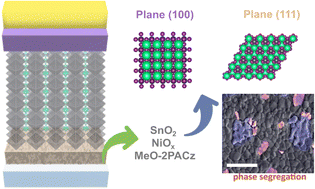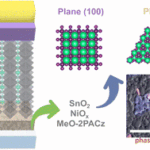Published Paper: The influence of the buried interface on the orientational crystallization and thermal stability of halide perovskite thin films

- 25 de June de 2025
- LikeUnlikeLike
New Publication in Journal of Materials Chemistry A!
We are excited to share our latest research article published in Journal of Materials Chemistry A, titled:
“The influence of the buried interface on the orientational crystallization and thermal stability of halide perovskite thin films”
This study sheds light on how the choice of buried interface materials—used as underlayers in both regular (n–i–p) and inverted (p–i–n) perovskite solar cell architectures—affects the crystal orientation and long-term stability of FA₀.₉Cs₀.₁PbI₃ perovskite films.
Key Highlights:
🔹 Oriented Crystal Growth: We demonstrate that the nature of the underlayer influences the preferential crystallographic orientation of the perovskite film, which plays a central role in both performance and stability.
🔹 Thermal Stress Response: By subjecting perovskite films and devices to 500 hours of continuous heating at 85 °C, we reveal how buried interfaces impact phase segregation and long-term thermal stability.
🔹 Interface-Driven Stability: Our results draw a direct correlation between the initial crystal orientation—induced by the underlayer—and the resistance of the film to degradation under thermal stress.
This work provides valuable insights for designing more stable and efficient perovskite solar cells by engineering the buried interface to control crystal orientation from the very first stages of film formation.
📄 You can access the full article here:
https://doi.org/10.1039/D4TA03063B
Stay tuned for more research updates from our group!
#PerovskiteSolarCells #ThinFilmStability #JMaterChemA #InterfaceEngineering #EnergyMaterials #Photovoltaics #CrystalOrientation
Share:
Search
Recent Posts…
Prof. Ana Flávia Nogueira Featured Among Women Leaders in Clean Energy Research
11 de April de 2025Group’s Participation in the XXII B-MRS Meeting
28 de October de 2024



